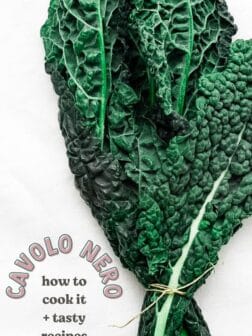How to Cook Cavolo Nero
Leafy and substantial Cavolo Nero (aka Tuscan Kale, Black Kale, Lacinato Kale, Dinosaur Kale) is my all time favorite green. I am here to show you how to cook it and will share cavolo nero recipes that will make you fall in love with it too!
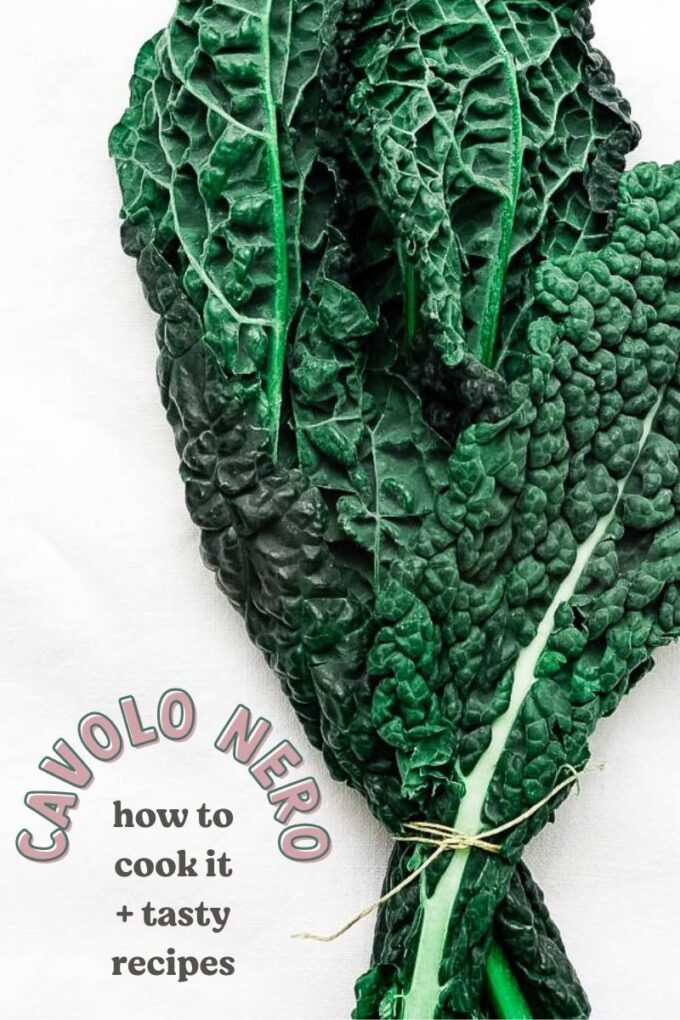
Cavolo nero is a dream to cook with. A DREAM, I tell you. If ten years ago you told me I’d be writing stuff like this on the internet for a living, you’d have got some side eye, but let’s see if I can make my case here.
What is Cavolo Nero and what is it good for?
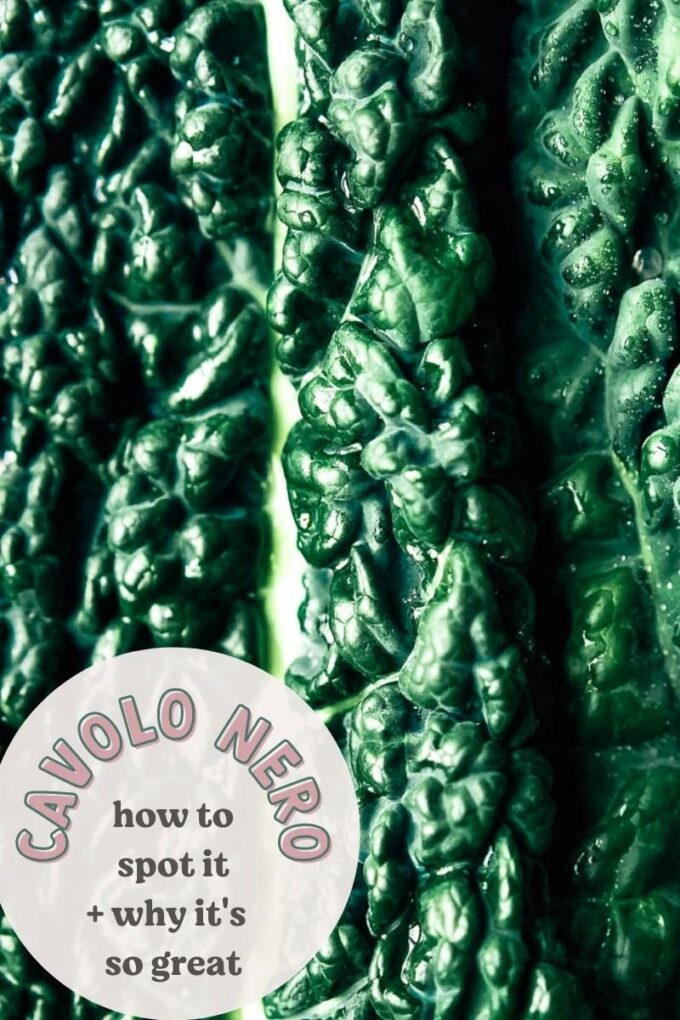
Cavolo nero is a type of kale, also commonly known as Tuscan Kale, Black Kale or Lacinato Kale.
It’s different from the commonly used Curly Kale in many ways:
- Curly kale is a lighter brighter green, while cavolo nero is a deep green that almost looks like a teal color sometimes.
- Curly kale leaf wilts and reduces quite significantly where cavolo nero stays heartier with more bite, making it harder to overcook and nicer to reheat.
- Curly kale leaves are, as named, curly, but the texture is softer overall. Cavolo nero leaves are flat but have a bumpy, ridged texture that soaks up sauces and toppings much better.
However – the majority of the time, curly kale and cavolo nero can be used interchangeably. Many of the recipes I link to in this post actually call for curly kale, but have been tested and loved with cavolo nero.
Prepping Cavolo Nero
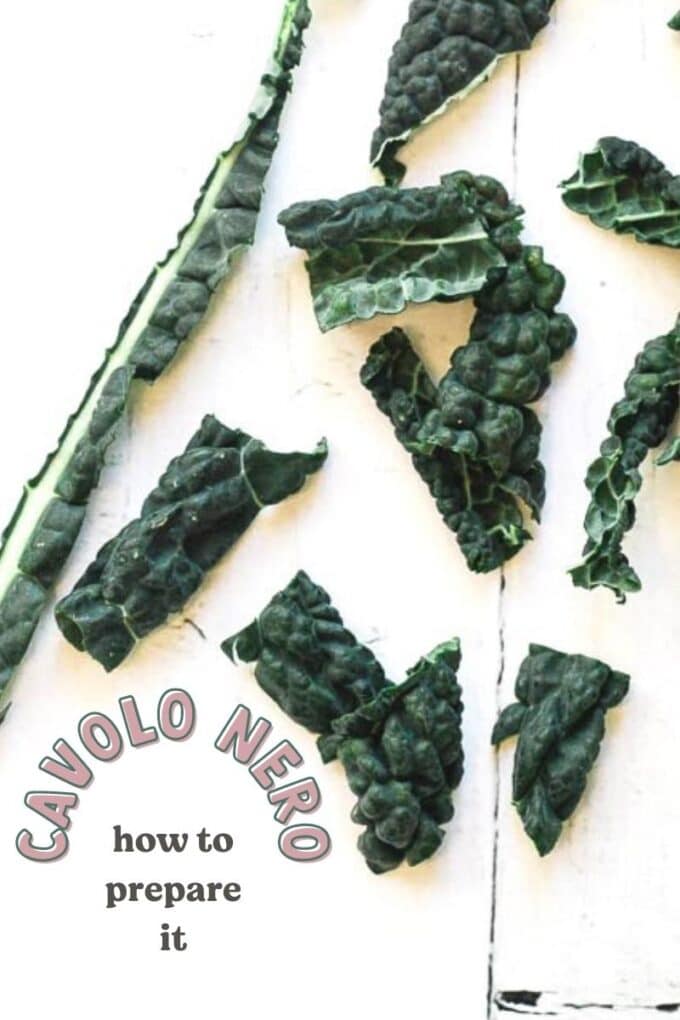
The main things to remember when you’re setting off to cook with cavolo nero are that:
- You need it clean. If it’s from a supermarket, the heavy lifting will have been done for you so just give it a good rinse. But if it’s from a farmers market or picked fresh, you’re going to have to work harder for your dinner. Soak, rinse, massage, repeat until the leaves are squeaky clean.
- You need it dry. The degree to which you need it dry depends on your recipe. If stir frying, you want it super dry so let it drain, then scatter across some paper towel and pat it dry. If you’re adding to raw leaves to a soup, you just want to make sure it’s not excessively wet, but don’t need to worry too much.
- You need the stems off. The stems are super tough, and not in a good way, so we want them gone. But cavolo nero makes this fairly easy for us, easier than curly kale, because the leaves are so flat, and the stalks so distinct. You can quite easily slice across it – or cut across with kitchen scissors – to free the leafy part.
And then it’s just a question of how you want to slice it.
- Long, thin ribbons are great for stir frying, or mixing into pasta…
- … Though larger, roughly torn pieces work too for those purposes when you are in a rush.
- Chopping into tiny pieces is great for adding to soups or casseroles, where you don’t want too big a mouthful at a time.
Stir Frying Cavolo Nero
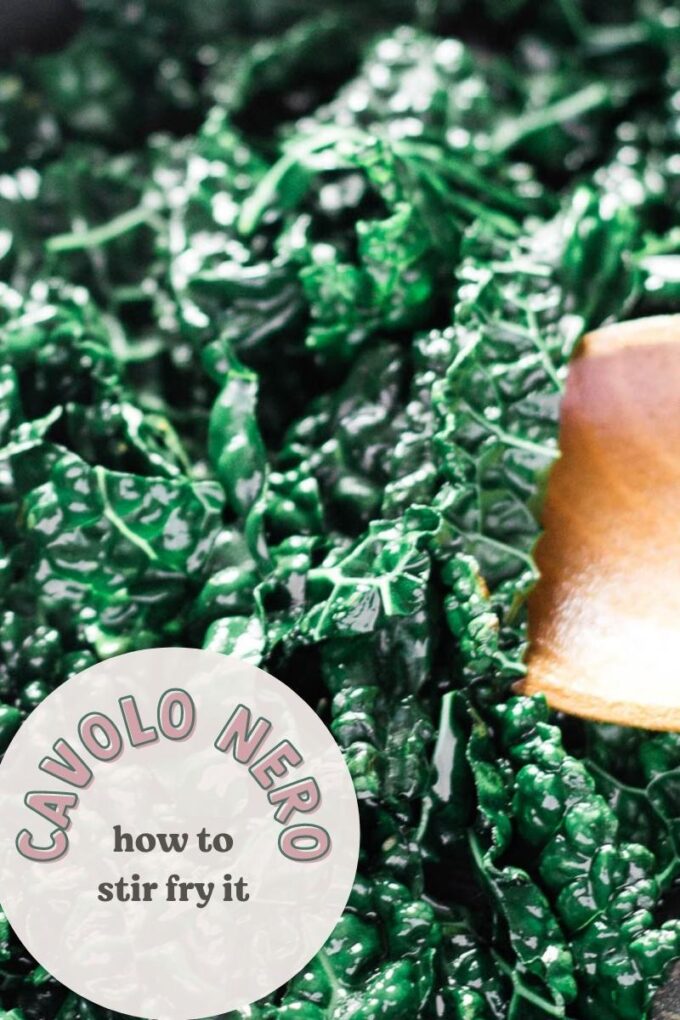
Pan frying cavolo nero is the quickest and easiest ways to go about things.
Simply heat some olive oil in a pan, and add the cavolo nero alongside a few cloves of crushed garlic in batches (allowing it to reduce a little before adding the next bit), stir frying over a medium heat. Add salt and pepper to taste. It’s ready when it’s softened, reduced, and becomes a brighter shade of green.
That’s all you really have to do, but you would ideally add some flavor in one of the following ways:
- Make it lemon-y. Adding a few pinches of lemon zest towards the end of the cooking time, and then squeezing some lemon juice over the cavolo nero right at the end.
- Sundried tomatoes, olives, pine nuts at the end will transform it into the perfect Mediterranean style side dish.
- Add chili or ginger alongside the garlic.
- Add wine. A few pours of white wine while it’s cooking will infuse a beautiful flavor and leave the cavolo nero juicy at the end. You can cook as much or as little wine off as you want – depending on whether you want it a little juicy at the end, or whether you want it fairly dry but with the wine flavor present. This is kind of a stir frying / braising hybrid.
Stir Frying versus Braising
Some recipes call for braising cavolo nero, which means that more liquid is used in the process so the end result is a little softer. Sometimes you boil the cavolo nero before stir frying. Honestly, for me, this is a little too much effort and I don’t feel the need. Other braised cavolo nero recipes simply add wine or stock to the frying pan and allow the cavolo nero to cook covered for a little bit.
My favorite approach is stir frying with a little bit of liquid (generally wine or lemon juice), which is what you’ll see in many of my own recipes:
Recipes Using Stir Fried Cavolo Nero
- Abel and Cole’s Cavolo Nero Bruschette
- Sophie’s Cavolo Nero Gnocchi
Using Cavolo Nero in Soups & Stews

Cavolo nero is a lovely soup ingredient because unlike many other greens, it doesn’t wilt too much and can retain a nice texture even when reheated. I particularly enjoy it in chunky soups alongside other substantial ingredients but it can be pureed down in some recipes too.
When using it in a soup, it’s not necessary to pre-cook, you can just throw it in at the end, let it simmer for about 5 minutes and you’re good to go.
Soup Recipes with Cavolo Nero
- Abel and Cole’s Broccoli, Cavolo Nero & Blue Cheese Soup
- Jamie Oliver’s Ribollita
- Thomasina Mier’s Minestrone Recipe
Roasting Cavolo Nero
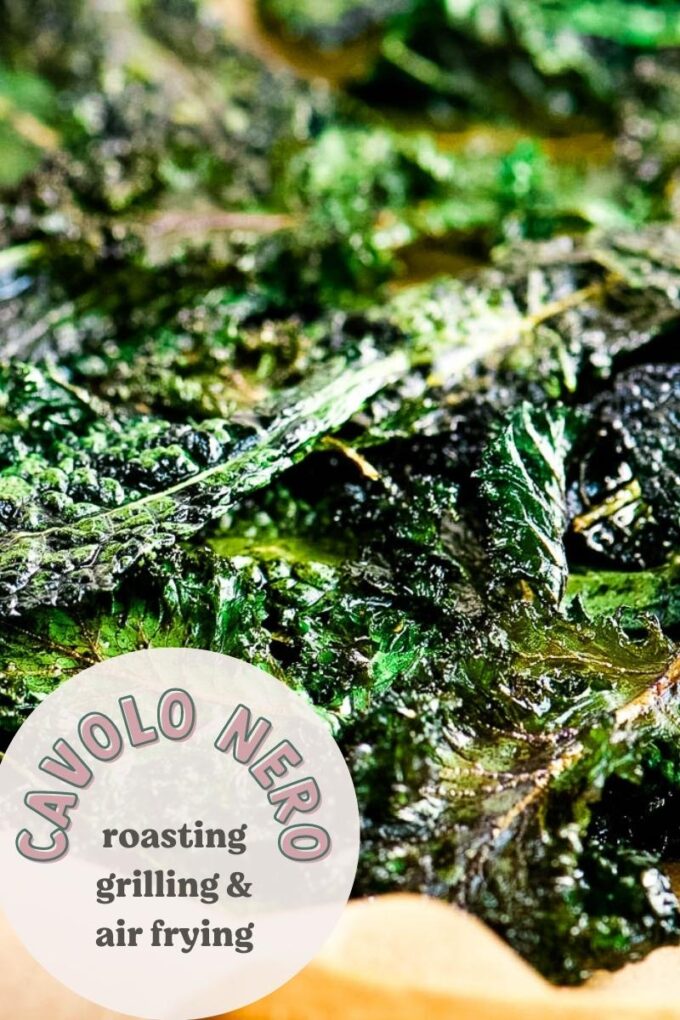
Cavolo nero has an edge over curly kale when it comes to roasting, because it’s just less likely to burn and frizzle up around the edges.
If kale chips are your thing, you should feel very free to roast cavolo nero. Remove the leaves from the stems, brush with oil, season with salt and pepper (and any other spices you might wish to use to flavor it) and bake for 30 minutes at 120C / 250F.
Even if you don’t want to go all the way to kale chip levels of roasting, and just want to crisp it up around the edges and soften it, this can work well, for example if you’re adding it to a tray bake or sheet pan meal and didn’t want to have to cook it separately.
You’d want to add your chopped leaves around 10 minutes before the end of the baking time.
Recipes to Try:
- Letty’s Kitchen’s guide to cooking lacinato kale on a grill.
- Felicity Cloake’s Perfect Kale Chips.
- Katie’s recipe for Air Fried Kale Chips.
- You could try my Roasted Kale & Chickpea Caesar or my Mediterranean Sweet Potato Tray Bake with Cavolo Nero instead of curly kale.
Baking Cavolo Nero & Adding it to Casseroles
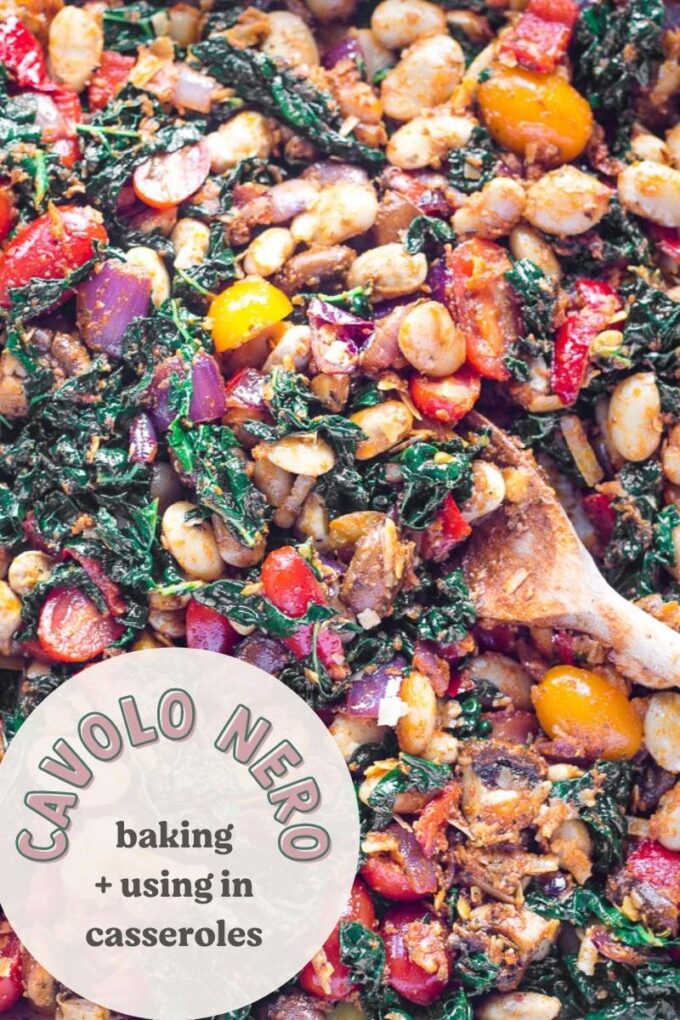
This isn’t the most obvious route, but for many of the same reasons it works well for soup, cavolo nero works well as an ingredient in casseroles and bakes.
You can usually just throw it in raw, and it will bake alongside the other ingredients, though some recipes might have you pre-cook it to infuse some extra flavor.
Baked Cavolo Nero Recipes
- Serious Eats’ Lacinato Kale Gratin
- Good Food’s Tomato Kale Pasta Bake
Pureed into a Sauce or Pesto
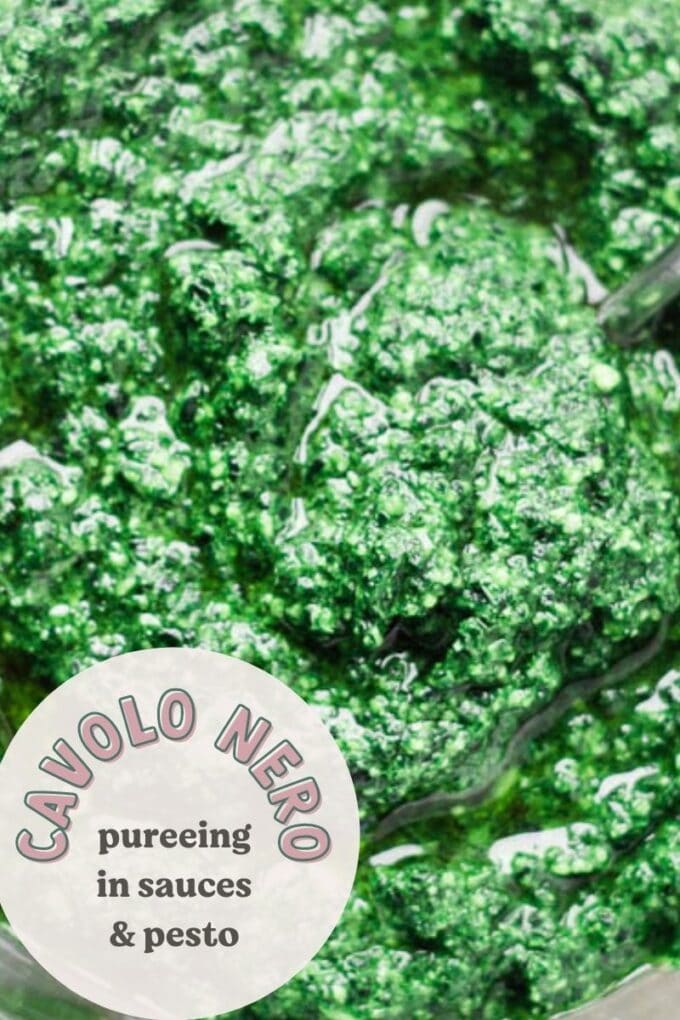
Cavolo nero can puree down to a delicious sauce or pesto. Sometimes it makes sense to pre-boil it to soften the leaves up enough to get silky smooth, other times you can start from raw but end up with a little more texture at the end.
Cavolo Nero Sauces
- Jamie Oliver’s Super Green Spaghetti.
- Abel and Cole’s Minty Cavolo Nero Pesto.
- Thomasina Miers’s Cavolo Nero, Leek & Potato Soup.
Not Actually Cooking it – Eating Cavolo Nero Raw

Oh yeah, I almost forgot. You don’t even have to cook cavolo nero. Massaging the leaves by hand to soften them will make cavolo nero palatable to eat raw.
Try:
- Waitrose’s Cavolo Nero & Stilton Caesar Salad (this is not vegetarian as written due to the anchovies, but you could swap in a spoonful of capers or simply use my own vegetarian Caesar dressing recipe)
- How Sweet Eat’s Parmesan Pistachio Kale Salad
Let’s discuss!
Do you love cavolo nero? Got a great tip? Have I missed something important? Tell me all in the comments.

